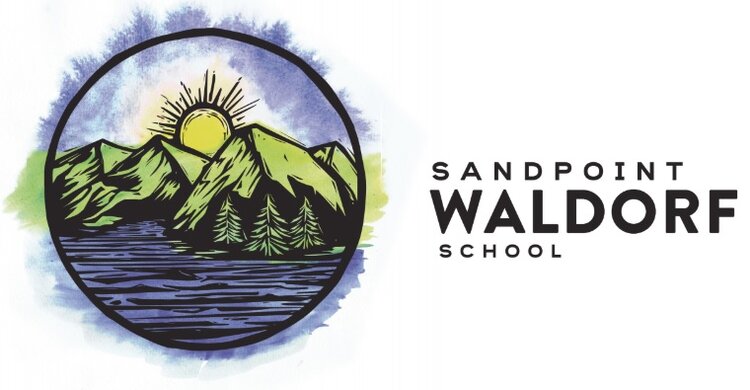BONNER DAILY BEE
| September 12, 2020 1:00 AM
At the Sandpoint Waldorf School, as at most schools across the country, returning to school in the midst of a pandemic looks quite different.
After almost six months away from their campus, SWS students arrived on Wednesday for the first day of school to classrooms inside spacious tents in the field behind the Litehouse YMCA. Instead of heading into the school building, students in first through eighth grade found their classroom tent with benches, desks, bookcases, chalkboards and, in some cases, log rounds as seats. A gentle breeze wafted through the tents allowing for easy ventilation.
Each tent is eight-sided allowing for a flexible, open and airy classroom. When the teachers wanted the students to engage in movement activities, they only had to step outside the tent where there was ample space to form a large circle.
“The choice to move the classrooms outside was a quick decision when we looked at the COVID transmission rates in an outdoor setting. With so much of our curriculum involving movement and time outside, it seemed to be a very natural and gentle transition for both students and our faculty,” said Julie McCallan, the school’s educational director.
Although the decision was easily made, the act of creating this simple arrangement required a lot of coordination and collaboration. From the moment, the school suggested the concept of the outdoor learning lab in tents, Tammy Campbell, branch executive of Litehouse YMCA, was very supportive.
“I believe this kind of creativity, and these partnerships, will allow us as the YMCA and our community to thrive and succeed.”
The YMCA will be able to use the tents when they host the high school swim meet later this summer for parents and teams.
The parents were also a major player in making the outdoor learning lab possible, SWS officials said. They built and painted chalkboards for each tent and brought in log rounds for the benches. The week before school they erected the tents. When the Labor Day wind storm blew in, the parents came running, literally, to help drop the tents in the morning and then returned to put them back up again in the evening, even repairing and replacing some of the poles that bent in the process. By Tuesday, the day before school, the tents were ready for the teachers to move in, each adding their personal touch to them.
The transition to teaching in tents has required a lot of creativity and flexibility from the teachers, as they figured out what is essential for each day’s instruction and how to utilize the outdoors to broaden the student’s experience of the world.
Fourth grade teacher Clare Stansberry said she views it as a time to connect students with nature in a deeper way. “Outdoor education is an opportunity to connect students to the place they live and expand their resilience in the face of all the elements,” she said.
The faculty are thinking out of the box and turning adversity into an opportunity for change and growth. Rather than having students crowded indoors in the woodshop, woodworking teacher Shaun Deller took his students on a walk to the nearby slough to identify trees. The wind storm had blown down a large cottonwood tree which provided the students with limbs to carve. For her first botany lesson, fifth grade teacher Yvette McGowan took students on a walk to a nearby garden where they could observe mushroom propagation. Upon their return to their tent they wrote their observations in their journals.
The pre-kindergarten and kindergarten students return to school on Thursday. While their classrooms are still indoors, they will be spending much of their day outside playing. Ryan Rayniak, one of the mixed-aged kindergarten teachers is planning two full days away from campus each week, these adventure days will allow the students to explore the park, the slough, and the nearby wetlands and forests. Dressed in layers and rubber boots, and carrying snacks, water, and extra clothing in their backpacks, the children will be ready for whatever the weather brings, SWS staff said.
Schooling during a pandemic is fraught with unknowns and challenges, but the Sandpoint Waldorf School is hopeful that being outdoors as much as possible will help mitigate the spread of COVID-19 while offering the students a rich and creative learning environment.
In this, they said the goals of the YMCA and the Sandpoint Waldorf School align: to offer programs that help build a healthy spirit, mind and body for all. Both organizations are nonprofits that are committed to making our community and the world a better place to live, work and play.


